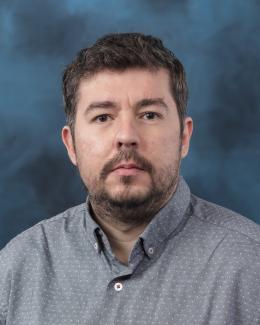
The main research focus of the Joule-Thomson scanning probe microscope are electronic phase transitions in quantum materials (superconductivity, charge density waves, metal insulator transitions, magnetic transitions). To this end, the microscope enables atomically-resolved microscopy and spectroscopy of conductors and insulators down to T=1.2 K. The microscope operates as a Scanning Tunneling Microscope (STM), a frequency-modulated non-contact Scanning Force Microscope (FM-ncAFM) or a combination thereof. For FM-ncAFM, a sharp metal tip is mounted at the end of a length-extension quartz resonator with q-factors above 50K. The microscope head has independent tip and sample exchange, provides optical access to the tip-sample junction, and has 4 contacts on the sample holder. It offers excellent drift stability at 4K, of <100 pm/hr (parallel to the surface) or better. Measurement techniques include tunneling microscopy, scanning tunneling spectroscopy, force-distance spectroscopy and Kelvin probe force microscopy. The accompanying UHV system is equipped for UHV surface preparation and molecular thin film deposition.
Features:
Available modes:
- Andreev and Josephson tunneling microscopy.
- Non-contact-atomic force microscopy (NC-AFM)
- Short-range force-distance curves
- Kelvin-probe atomic-scale microscopy with atomic resolution.
- Tuning-fork-based Scanning Force Microscopy
- Atomic and molecular manipulation
- Tunneling spectroscopy and quasiparticle interference imaging

Specifications/Extras:
- Resolution: atomic spatial resolution; 100 uV energy resolution; < 0.1 nm/hr drift at 4K, short-range force-distance curves
- Applicable to well-defined solid surfaces of any material, and adsorbates
- Temperature: 1.2K – 65K, 77K – 200K, pressure: 10-10 Torr (UHV)
- Up to 100 hrs retention time on liquid He (from 1.2K to 4K)
- Nanonis controller (Nanonis V5), with 4-channel Lockin-amplfier
- Preparation chamber: heating up to 1200K, sputtering, annealing, molecular and atomic deposition.
Applications
Tunneling spectroscopy of metals and superconductors – quasiparicle gap spectroscopy, hyperspectral imaging, image potential states, quasiparticle scattering. Same nanoscale areas can be tracked as a function of temperature
Microscopy and spectroscopy of molecular adsorbates – in-situ spectroscopy and microscopy of molecular structures supported on surfaces
Characterization of defects using simultaneous electronic and structural microscopy down to atomic resolution – combination of force microscopy and tunneling spectroscopy provides deep insight into the structure and electronic effects of inhomogeneities on surfaces
Atomic and molecular manipulation – using the tip of scanning tunneling microscope to excite, desorb and rearrange atoms on the surface
Direct probe of superconductivity with nano and atomic-scale resolution, utilizing Andreev and Josephson tunneling currents. Andreev tunneling spectroscopy (ATS) was developed for the first time, using this instrument at ORNL.
"Explosive" current imaging for injection of defects into solid state materials
Microscopy and spectroscopy of molecular adsorbates – in-situ spectroscopy and microscopy of molecular structures supported on surfaces.
Characterization of defects using simultaneous electronic and structural microscopy down to atomic resolution – combination of force microscopy and tunneling spectroscopy provides deep insight into the structure and electronic effects of inhomogeneities on surfaces.
Equipment:
Joule-Thomson STM/ncAFM SPECs


